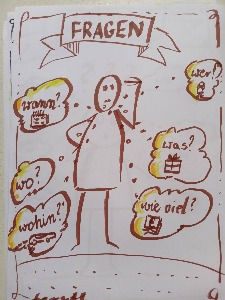Sketchnoting: A Visual Pathway to Deeper Learning
- Barbara Legutko
- 15 sie 2023
- 3 minut(y) czytania

Innovative teaching methods are constantly emerging to enhance student engagement,
comprehension, and creativity. One such technique gaining traction in classrooms around the world is sketchnoting. Beyond its artistic allure, sketchnoting offers a powerful avenue for students to synthesize complex concepts, bolster their retention, and actively engage with the learning process. Sketchnoting, also known as visual note-taking, involves the marriage of words and images to create a dynamic representation of information. Unlike traditional note-taking, where words alone dominate, sketchnoting combines drawings, symbols, and even colors to form a cohesive visual narrative. While the appeal of sketchnotes lies in their aesthetic charm, their real value resides in the cognitive processes they stimulate. The educational potential of sketchnoting lies in its capacity to distill intricate ideas into digestible visuals. Complex topics that might have appeared daunting on paper suddenly become approachable puzzles to solve through imagery. Concepts that previously required tedious explanations are now transformed into vibrant storylines. This transformation encourages students to actively process the material, decipher its nuances, and convey their understanding in a uniquely personalized manner. Imagine a history lesson on the American Revolution where students capture the causes, battles, and outcomes through a series of interconnected doodles and captions. The process of conceptualizing these visuals prompts critical thinking—requiring students to analyze, synthesize, and prioritize information. As they sketch, they're making active decisions about what to include, what to emphasize, and how to spatially arrange their thoughts. This artistic engagement leads to a deeper internalization of the material. Moreover, sketchnoting isn't solely about artistic prowess; it's about creativity in expressing ideas. Each student's sketchnote is a reflection of their individual perspective and thought process. In this way, sketchnoting accommodates different learning styles, allowing auditory, visual, and kinesthetic learners to find their niche. Students with a proclivity for visual thinking can flourish in this environment, leveraging their innate strengths to tackle complex subjects with a unique flair. Integrating sketchnoting into lessons is a twofold journey. For educators, it necessitates a shift in approach—moving from conventional lecture-style delivery to interactive, visual-rich teaching. Teachers become facilitators of learning, guiding students to conceptualize and represent knowledge creatively. For students, sketchnoting offers an opportunity to take ownership of their learning journey, fostering independence and confidence in their ability to process and communicate ideas effectively. Incorporating sketchnoting isn't a matter of replacing traditional methods, but rather enhancing them. It's a tool that empowers both teachers and students to experiment with new dimensions of engagement. The classroom transforms into an arena of exploration, where ideas leap off the pages, and learning becomes a collaborative art form. From science and mathematics to literature and history, sketchnoting finds its place across disciplines. It thrives in complex, multifaceted subjects, where concepts can be broken down into interconnected elements, inviting students to piece together the puzzle. The rise of technology also opens doors to digital sketchnoting, enabling students to marry the traditional with the contemporary, exploring new ways of presenting their ideas. As educators, let us consider sketchnoting not as a trend, but as a bridge between the age-old pursuit of knowledge and the digital era's creative fervor. In embracing this visual journey, we invite students to step beyond passive consumption, forging an active connection with the curriculum. In a world increasingly driven by visuals, it's only fitting that our classrooms evolve to cultivate these skills early on.
In the end, sketchnoting isn't merely about capturing ideas on paper—it's about fostering a mindset of discovery, creativity, and active engagement that resonates far beyond the classroom walls. So, let's wield our markers and pens with a new purpose, as we explore the vibrant intersection of words and images, unlocking a world of deeper learning for our students.




Komentarze